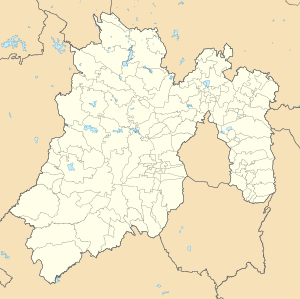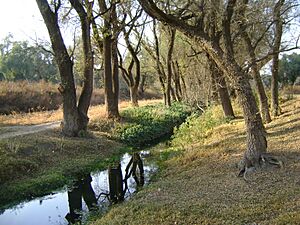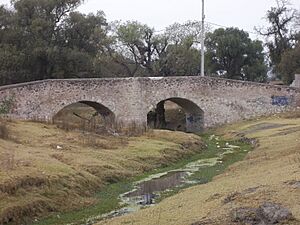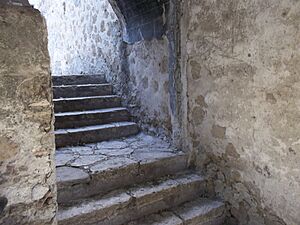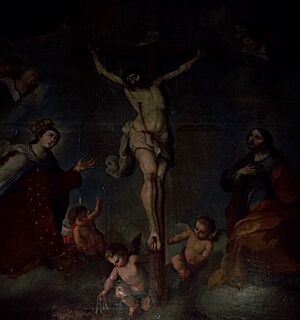Tlapanaloya facts for kids
Quick facts for kids
Tlapanaloya
|
||
|---|---|---|
|
Town
|
||
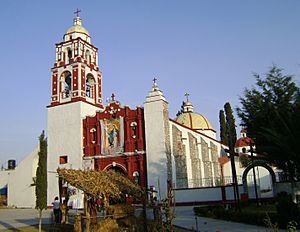
La Asunción Parish in Tlapanaloya
|
||
|
||
| Nickname(s):
Tlapa
|
||
| Country | ||
| State | State of Mexico | |
| Region | Zumpango Region | |
| Municipality | Tequixquiac | |
| Founded | 1168 | |
| Municipal Status | 1820 | |
| Area | ||
| • Total | 10.83 km2 (4.18 sq mi) | |
| Elevation
(of seat)
|
2,100 m (6,900 ft) | |
| Population
(2010)
|
||
| • Town | 6,466 | |
| Time zone | UTC-6 (CST) | |
| Postal code (of seat) |
55653
|
|
| Website | http://www.tequixquiac.gob.mx/ | |
Tlapanaloya is a town located in the State of Mexico in Mexico. It is part of the Tequixquiac area. The town is surrounded by other places like La Heredad Ranch to the north, Tajo de Tequixquiac to the south, the village of Hueypoxtla to the east, and Santiago Tequixquiac to the west.
The name Tlapanaloya comes from the Nahuatl language. It means "Place where stones are broken." The word te- means stone, tlapana means to break, and loyan means place.
Contents
Geography and Landscape
Tlapanaloya is an urban area within the Tequixquiac municipality. The town is divided into four main neighborhoods, called barrios, and two agricultural colonies, known as colonias ejidales.
A river called Salado de Hueypoxtla flows through Tlapanaloya. Its water is very important for watering crops. In the hills around the town, you can find many small streams (arroyos) and water holes (jagueyes).
The land in Tlapanaloya has both hills and flat areas. The largest hill is called Monte Alto. The ground in Tlapanaloya is mostly dry, flat land made of limestone.
A Look at Tlapanaloya's History
Long ago, Tlapanaloya was known as Tetlapanaloyan. It was one of eleven places in the Hueypoxtla area that paid taxes to the powerful Aztec Empire. This site was an Aztec altepetl (a type of village or town) where both Otomi and Nahua people lived.
Spanish Rule
In 1542, Tlapanaloya was given to a Spanish person named Juan Díaz de Lo Real. He built large farms called haciendas on land that used to belong to the local people. These haciendas then paid taxes to Hueypoxtla, which in turn paid taxes to the bishop in Mexico City.
Culture and Important Places
Historical Buildings and Monuments
- La Asunción Parish: This is the most important historical building in Tlapanaloya. It's a beautiful church located in the main square. It has a special style called Baroque and belongs to the Cuautitlan Diocese.
- Salado River Bridge: This bridge was built a long time ago during the Spanish colonial period. It was part of an important old road that led to Santiago Tequixquiac.
- La Esperanza Hacienda: This is another old Spanish building. It was connected to other haciendas and old towns in the area.
See also
 In Spanish: Tlapanaloya para niños
In Spanish: Tlapanaloya para niños



